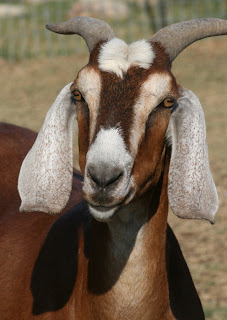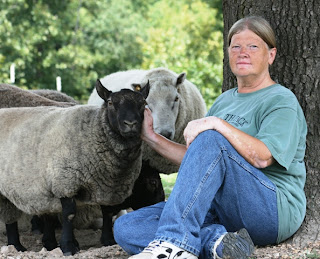I didn't post a blog entry last week because I'm spending most of my time finishing Homegrown Pork for Storey Publishing. It's the first totally 'meat animal' book I've written and it will be my last. I've had pigs for quite awhile but we don't eat them—they're pets. Writing about the meat aspect isn't too hard but illustration research is getting me down.
If you're familiar with Storey's great livestock books you'll know that they're illustrated with line drawings on nearly every page. To create illustrations that perfectly match what's going on in the text, authors provide examples for the illustrator to work from. For instance I recently used Google Images to gather eight representative images of pigs soaking in children's wading pools. They're tucked inside the images file for chapter 8, along with separate files containing images of a British-style pig ark, a Port-a-Hut, a hoop house, extension insulators for electric fencing, pigs wallowing, pigs drinking from troughs, a flap-style pig feeder, and a garden cart.
Normally I love the illustration-gathering phase of my Storey books but this time I'm running across disturbing images that I can't get out of my head. I realize that most people consider animals food and that's okay, but I believe meat-eaters should respect the creatures they eat. Yet I'm seeing so many disrespectful images of grinning hunters posed with wild boar with hats perched on their heads or tied on ATVs as if they're driving them. And pictures of pink baby piglets, dead, curled up in pans and of severed pig heads singed and grinning on a platter, ready to pop in the oven. These things haunt me long after I turn away. I'm writing about them because writing is a writer's job and I think Homegrown Pork will be an excellent book of its kind, but the images upset me so much that I know I'll never tackle a project like this one again.
Another thing that's upsetting me right now is lack of payment for work I've completed for one of the companies I write for (not Storey). I've been with this company for over 10 years and writing for them has mostly been a joy. I've had to beg for book advances that were past due but magazine checks were never more than a few weeks late. Now they're running three months behind. This amounts to a lot of money that I need right now to feed my animal friends; after all, this is the main reason I write for publication. The other writers I know who write for this company are in the same boat. The company tells us, "We're mailing checks at the end of this week" but they don't. Am I worried? Yes!
So, it can be hard to finish my morning chores in the blistering heat, then come straight to the computer and start working. Since I do this six days a week, I'm struggling to stay motivated. In the past I'd be popping anti-depressants by now but since discovering Reiki, flower essences, and EFT (Gary Craig's Emotional Freedom Technique, a.k.a. tapping), I've been able to stay on a reasonably even keel without medication. Here's a tip: if you write or plan to write, investigate energy modalities; they'll help you stay 'up' without pills.
- To learn about Reiki, subscribe to the free Reiki_On Yahoo email group. It's a great group, beginner-friendly, 6855 international members strong, and it teaches original Usui Reiki.
- EFT? Download Gary Craig's original manual as a free PDF document or buy it as in paperback or as Kindle book at Amazon. Tapping initially seems silly or hokey but try it—you will be amazed.
- The best introduction to flower essences that I know of is the Flower Essence Society's free download. Check it out. Again, it doesn't seem possible that minute traces of flower energy can influence emotions but they work.
I also avoid negativity (we haven't had TV for 12 years, I rarely listen to the radio, and I read Google news only as needed) and I immerse myself in positivity as fully as I can. I listen to good music, read uplifting books, visit positive websites, and subscribe to free mailings that lift my spirits when I open my mailbox in the morning.
If you're tired of doom and gloom news reporting, try Happy News. Its motto is "Real News. Compelling Stories. Always Positive". The website is inspiring and the Happy News newsletter, free.
Positive News – U.S. Edition is another source of inspirational, up-beat news.
And it's hard to beat Daily Good—subscriptions are free.
Another mailing that makes my day is Mike Dooley's Notes from the Universe. I find one in my mailbox five mornings a week. Notes from the Universe might not resonate for everyone but check them out. I love them.
Two blogs I recommend and subscribe to are Marelisa Fábrega's Daring to Live Fully blog and Henrik Edberg's The Positivity Blog. If you know of others like these, please leave a comment and tell me about them. I'd like to subscribe!
And when I'm feeling especially 'down', I take a goat break. See that face at the top of this entry? Kissing that face (and others like it) on a daily basis is more therapeutic than a fistful of Zolofts. I couldn't exist without animals in my life. :o)
===============
Please visit my Sheep Tips & Tricks and Goat Tips & Tricks blogs, and my Sue Weaver - Ozark Writer public page at Facebook.


















